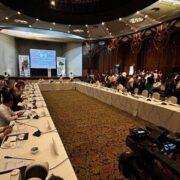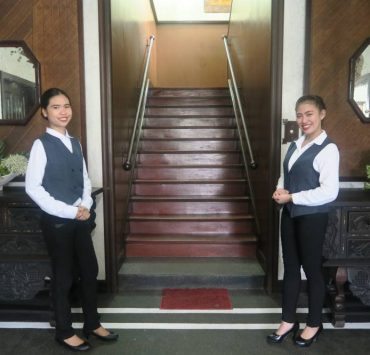For telcos, future-proofing can start in STEM classes
Cathy Yap-Yang, first vice president and head of group corporate communications at PLDT and Smart, said, “When we launched SWEEP … our dream was to make bold changes in the industry, by promoting a culture of innovation in schools and by encouraging more Filipino students to get into STEM and ICT-related (information and communication technology) courses.”
The PLDT Group continues to underscore the value of inclusive learning and industry-academe linkages like SWEEP, particularly to promote STEM education in the country. It aims to help narrow the digital divide by creating more STEM experts and upskilling more Filipinos toward jobs of the future.
In its two decades of existence, SWEEP has become an avenue for long-term learning and discovery about technology and a catalyst for growth and development among the youth.
Santiago said, “We continue to work closely with the country’s leading colleges and universities. We have likewise succeeded in producing industry-ready graduates to meet the increasingly digital demands of our customers, our communities and our country.”
He said there might be a need for a program to encourage students at a younger age to consider STEM careers.
“We believe that continuous learning and exposure to emerging technologies, through SWEEP, can equip the youth to find innovative solutions that can help create positive impact for present and future generations,” Orlino said.
Program for educators
While it would be unrealistic to expect to stem the brain drain or outward flow of Filipino talents, as people would naturally look for better opportunities, Orlino said by equipping more people with the skills to perform technical jobs available locally, they would create a pool who could readily fill vacancies left by those who seek greener pastures elsewhere.
The PLDT Group officially celebrated SWEEP’s anniversary with a learning and networking summit, SWEEP@20 and beyond, for partner schools.
On its part, GBF’s goal is to make a lasting impact on education in the Philippines.
The GBF founders all believed education could be the foundation of a strong Philippine economy so GBF has pursued in the past 30 years or so its mission to build the future, specifically through STEM. It started the observance of its 30th anniversary last year by launching its flagship program for educators, The GBF Class Builder, that would enable teachers to deliver great lessons by helping them master their craft.
The GBF Class Builder will provide training and coaching to STEM teachers in crafting their lesson plans.
“Through The GBF Class Builder, we envision our teachers to be more confident and effective in class, more ready to face the challenges of the future, while enjoying every class —feeling proud to be a teacher,” said Grace Colet, GBF executive director.
She said improved student performance was the end goal of the initiative that recognized educators as heroes of change who played a crucial role in nurturing Filipino learners, the future leaders and the workforce.
The program was developed with the help of IDEO, a global innovation company and leading proponent of design thinking.
Gokongwei legacy
Businessman and philanthropist John Gokongwei Jr. and his brothers Johnson, Henry and James established the GBF in 1992. James, the only surviving brother, is president of GBF.
John’s daughter Robina, GBF secretary, said their father “really loved this country” and her sister Lisa, GBF general manager, said he wanted to give back to the Philippines for all the good things he had.
Lance, John’s son and GBF chair and head of the Gokongwei Group, added that their father was happy to be building something. His late father, Lance said, believed business had a greater purpose, hence, the philanthropy.
The sons of the other Gokongwei brothers, Patrick, Bobby and Brian Go, in paying tribute to their respective parents, declared that their fathers shared eldest brother John’s deep commitment to promote education believing that it was the most effective way to lift people up.
“Through the years, we have been striving for the advancement of STEM education, believing this is the driving force behind sustainable national development,” Lance said.
“By equipping learners with quality STEM education, we prepare them to be digitally adept workers, critical thinkers and innovative problem-solvers who can contribute to the growth of their communities,” he added.
Partner school heads— namely Fr. Bobby Yap, SJ, Ateneo de Manila University president, and Bro. Bernie Oca, FSC, De La Salle University president —said GBF endowments had played a huge role in the educational formation of many Filipino professionals.
Lisa, who launched the first Omnibus Partnership between GBF and the Department of Education, exhorted the audience at the anniversary celebration to continue with GBF “on the path of solidarity and commitment toward our shared mission of building the future through education.” INQ It’s unrealistic to expect the brain drain to stop anytime soon, but a talent pool can be created to readily fill vacancies left by those who seek greener pastures elsewhere

















